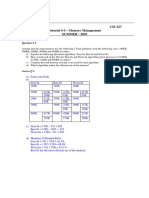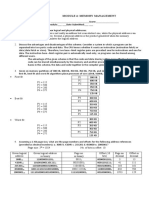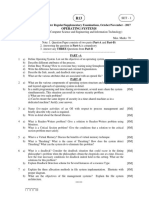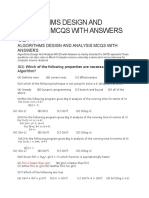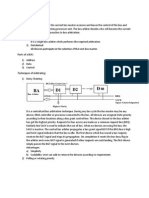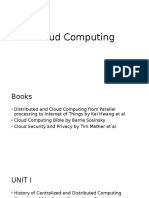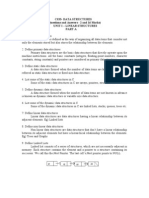0% found this document useful (0 votes)
2K views6 pagesAnswers: Chapter 5: Memory Management Exercises
This document contains sample exam questions about memory management concepts including placement algorithms, segmentation, paging, and buddy system partitioning. It provides examples of using first-fit, best-fit, and next-fit algorithms to allocate memory blocks of different sizes. It also shows examples of address translation using segmentation and paging tables, drawing the appropriate tables and finding physical addresses from logical addresses. Finally, it demonstrates allocating memory using the buddy system partitioning scheme.
Uploaded by
atikurCopyright
© © All Rights Reserved
We take content rights seriously. If you suspect this is your content, claim it here.
Available Formats
Download as DOC, PDF, TXT or read online on Scribd
0% found this document useful (0 votes)
2K views6 pagesAnswers: Chapter 5: Memory Management Exercises
This document contains sample exam questions about memory management concepts including placement algorithms, segmentation, paging, and buddy system partitioning. It provides examples of using first-fit, best-fit, and next-fit algorithms to allocate memory blocks of different sizes. It also shows examples of address translation using segmentation and paging tables, drawing the appropriate tables and finding physical addresses from logical addresses. Finally, it demonstrates allocating memory using the buddy system partitioning scheme.
Uploaded by
atikurCopyright
© © All Rights Reserved
We take content rights seriously. If you suspect this is your content, claim it here.
Available Formats
Download as DOC, PDF, TXT or read online on Scribd
/ 6

